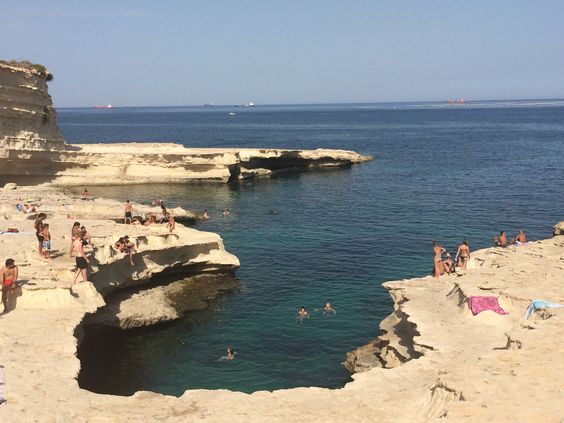Malta, a little however generally well off Mediterranean island, Roman Tidal Baths in Malta and Their Relation to Sea Level is home to various remainders of old civilizations. Among these fortunes, the Roman flowing showers in Malta ocean degree give a totally one of a kind look into the resourcefulness and lifestyle of the Roman Domain. These baths, believed to have been used for both healing and leisure purposes, are outstanding for his or her place close to the sea and their connection to herbal tidal actions. In this article, we can explore the significance of those baths, their ancient history, and their connection to the changing sea stage in Malta.
The History of Roman Tidal Baths in Malta

During the Roman career of Malta, which started out around 218 B.C., the island has become an vital outpost for alternate and military sports. The Romans, recognized for their architectural prowess and engineering, constructed a number of systems at the island, including roads, villas, and, of direction, Roman tidal baths. These baths had been a testament to the Roman fascination with cleanliness, relaxation, and socialization, with lots of them strategically positioned alongside the shoreline to take gain of herbal assets inclusive of seawater.
The Roman Tidal Baths in Malta and Their Relation to Sea Level are in particular unique due to the fact they have been designed to engage with the herbal ebb and drift of the sea stage. Unlike typical Roman baths, which relied on artificial heating and water delivery structures, those tidal baths were evidently replenished by means of the ocean, with water flowing inside and outside with the tides.
How the Roman Tidal Baths Worked
The Roman Tidal Baths in Malta and Their Relation to Sea Level have been ingeniously constructed to harness the motion of the tides. Located at or close to sea level, those baths would fill with seawater all through high tide and progressively empty because the tide receded. This herbal cycling of water furnished a steady supply of easy seawater, which was believed to have therapeutic advantages.
The baths usually consisted of a chain of stone-cut swimming pools that allowed seawater to drift in from the close by sea. As the tide rose, water might fill the swimming pools, and because it lowered, the water might drain back out, leaving behind fresh, cool water. The regular motion of the water helped preserve the baths smooth and sparkling without the need for guide intervention, a big benefit within the historic world.
Location and Design of Roman Tidal Baths in Malta
Several remnants of Roman Tidal Baths in Malta and Their Relation to Sea Level can nonetheless be observed today, with the most extremely good examples positioned close to the beach areas of Sliema and St. Paul’s Bay. These locations have been probably chosen for his or her proximity to the coast, permitting the baths to be positioned at just the proper height relative to sea stage.
The design of the baths became each purposeful and aesthetic. Carved into the rocky coastline, those baths featured shallow pools with steps leading down into the water. The stone partitions that formed the pools have been constructed with precision to make sure that water would flow smoothly inside and outside. Some baths even had channels or sluices to assist direct the go with the flow of water and make sure that the swimming pools remained full in the course of high tide.
In addition to their purposeful layout, those Roman Tidal Baths in Malta and Their Relation to Sea Level have been frequently adorned with elaborate mosaics and carvings, showcasing the creative and cultural impacts of the time.
The Role of Sea Level in Roman Tidal Baths
The achievement of the Roman Tidal Baths in Malta and Their Relation to Sea Level turned into closely tied to the natural sea degree. The baths were specifically built at a peak that could allow them to be filled and tired via the tides without becoming submerged or left dry for too long. As the sea level rose and fell, it played an essential role in preserving the cleanliness and functionality of the baths.
Interestingly, adjustments in sea stage over the centuries have impacted the renovation of these historical systems. In a few regions, rising sea levels have prompted the baths to be partially submerged or eroded, whilst in others, the receding sea stage has left the baths further from the shoreline than they once have been. This has made the Roman Tidal Baths in Malta and Their Relation to Sea Level each a symbol of the past and a reminder of the ongoing shifts in our environment.
Tidal Baths and Their Cultural Significance
The Roman Tidal Baths in Malta and Their Relation to Sea Level had been extra than simply functional systems; they have been additionally critical social and cultural areas. Much like Roman baths somewhere else inside the empire, these tidal baths served as places where people could acquire, loosen up, and have interaction in conversation. Bathing became an important part of Roman lifestyles, and the tidal baths in Malta would have been no exception.
In addition to their social function, the tidal baths also had health benefits. Seawater changed into believed to have restoration homes, and the tidal baths allowed the Romans to revel in these advantages in a managed surroundings. The steady glide of clean seawater, combined with the natural cooling impact of the tides, made these baths best for relaxation and rejuvenation.
The Impact of Rising Sea Levels on Roman Tidal Baths in Malta
Today, the Roman Tidal Baths in Malta and Their Relation to Sea Level are a reminder of both the island’s historic records and the changing dynamics of our planet’s sea level. As worldwide sea levels hold to upward push because of climate trade, the renovation of those ancient systems is below threat. Coastal erosion, better tides, and severe weather activities have all contributed to the gradual degradation of the baths.
Archaeologists and conservationists are operating to keep what remains of those historical websites, however the rising sea level gives a good sized challenge. Some professionals consider that Roman Tidal Baths in Malta and Their Relation to Sea Level might also in the end be lost to the sea altogether if modern tendencies keep.
Visiting the Roman Tidal Baths in Malta
For those interested in experiencing the Roman Tidal Baths in Malta and Their Relation to Sea Level, there are several websites open to visitors. While a number of the baths are in better circumstances than others, they all provide a captivating glimpse into Roman engineering and their relationship with nature.
Visitors can explore those ancient swimming pools, positioned at or close to sea level, and consider what existence could have been like for the Romans who once bathed there. Guided excursions are to be had in positive locations, offering extra ancient context and insights into the significance of the baths.
Conclusion
The Roman Tidal Baths in Malta and Their Relation to Sea Level sea level are a great instance of ancient ingenuity and variation to the herbal world. These baths, which once provided Romans with a highly-priced and health-improving revel in, now stand as a testomony to the island’s rich records. However, with rising sea levels, those ancient systems are in danger, making it all the more vital to keep and guard them for future generations to realize.
